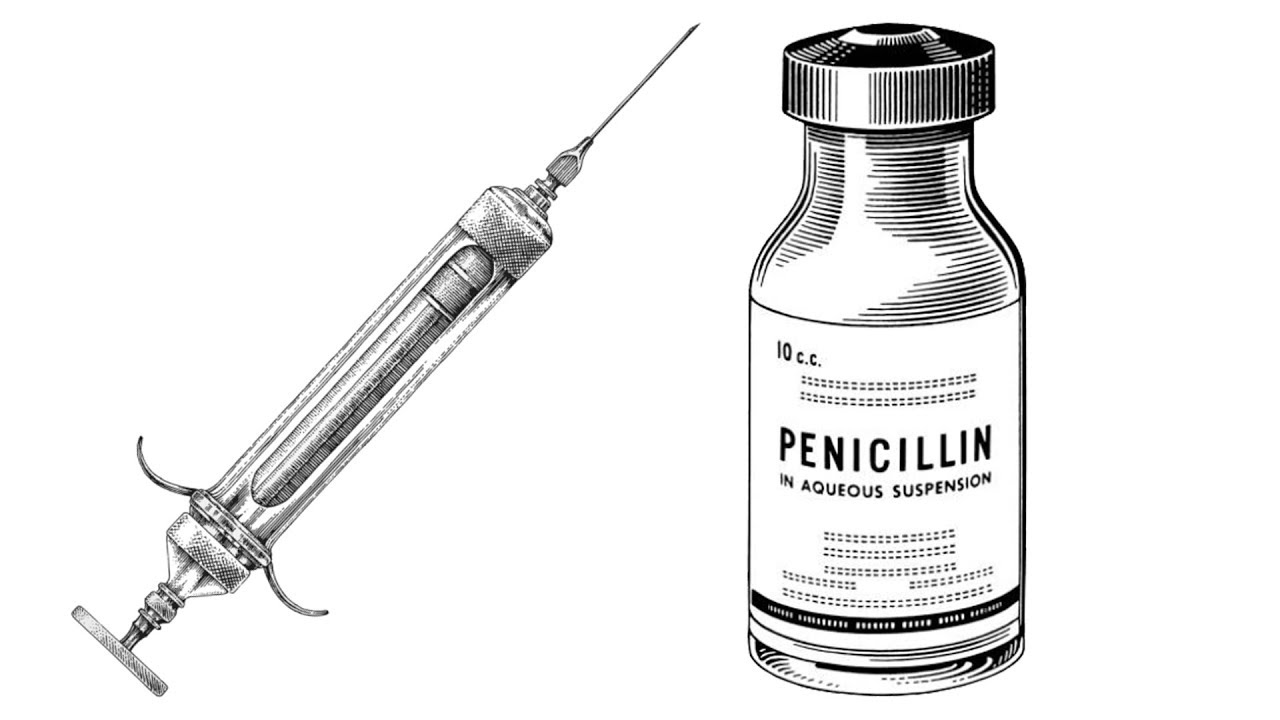
Penicillins are a type of antibiotic derived from Penicillium fungi. An antibiotic is a type of medicine that inhibits the growth of, or kills, bacteria.
Penicillin G (also called benzylpenicillin) was discovered by accident in 1928. Alexander Fleming, a Scottish physician-scientist was growing a type of bacteria called Staphylococcus Aureus on an uncovered petri dish when it became contaminated with mold spores. He observed that the areas of bacteria near the mold were dying. He isolated the substance from the mold that was killing the bacteria and called it penicillin.
Another naturally occurring penicillin, penicillin V was later isolated from the same mold. All other penicillins are semi-synthetic (made by modifying the structure of the original naturally occurring penicillins). Modification extends their spectrum of activity, allows them to be taken orally, and increases their resistance against penicillinase, an enzyme produced by some bacteria that inactivates penicillin.
Penicillins work by preventing the cross linking of amino acid chains in the bacterial cell wall. This does not affect pre-existing bacteria, but newly produced bacterial cells have weak cell walls that easily rupture.
Penicillins may be used to treat a wide range of infections caused by susceptible bacteria, such as:
The natural penicillins (penicillin G and penicillin V) are only active against gram-positive bacteria (see below for an explanation). Penicillin V is more acid-resistant than penicillin G, which means it can be taken orally.
Modern semi-synthetic penicillins include ampicillin, carbenicillin (discontinued), and oxacillin. These can be taken orally, have some degree of resistance to beta lactamase, and are effective against some gram-negative bacteria. Most bacteria can be classified as gram-positive or gram-negative based on differences in their cell wall structure, which can be distinguished under a microscope using a type of dye. One of the most important differences between these two types of bacteria is that gram-positive bacteria are more susceptible to antibiotics while gram-negative bacteria are more resistant to antibiotics.
Antipseudomonal penicillins, such as piperacillin and ticarcillin (discontinued) are penicillins that have additional activity against some hard-to-kill types of gram-negative bacteria such as Pseudomonas, Enterococcus and Klebsiella. They are useful for urinary tract infections caused by susceptible bacteria because they concentrate in the urine.
Some penicillins are combined with a beta-lactamase inhibitor. A beta-lactamase inhibitor blocks the activity of beta-lactamase enzymes but tends to have little antibiotic activity on its own. Some penicillins (such as oxacillin, dicloxacillin, and nafcillin) are naturally resistant to certain beta-lactamases and are called penicillinase-resistant penicillins. Others, such as amoxicillin, ampicillin, and piperacillin can have their activity extended by combining them with a beta-lactamase inhibitor. Clavulanate, sulbactam, and tazobactam are all beta-lactamase inhibitors.
Spectrum of activity:
| Generic name | Brand name examples |
| amoxicillin | Amoxil, Moxatag |
| ampicillin | Principen |
Spectrum of activity:
| Generic name | Brand name examples |
| piperacillin | Pipracil |
Spectrum of activity:
| Generic name | Brand name examples |
|---|---|
| amoxicillin/clavulanate | Augmentin, Amoclan |
| ampicillin/sulbactam | Unasyn |
| piperacillin/tazobactam | Zosyn |
Spectrum of activity:
| Generic name | Brand name examples |
|---|---|
| penicillin g benzathine | Bicillin L-A |
| penicillin v | Penicillin VK |
Spectrum of activity:
| Generic name | Brand name examples |
|---|---|
| dicloxacillin | Dycill |
| nafcillin | Unipen |
| oxacillin | Bactocill |
Penicillins are generally safe, with low toxicity and good efficacy against susceptible bacteria.
Many people believe that they are allergic to penicillin. However, true penicillin allergy is rare, and only occurs in 0.01-0.05% of people who take penicillin. Symptoms may include nausea, vomiting, itchy skin, rash, wheezing, swelling around the throat, and respiratory collapse.
Penicillins generally cause few side effects. The most common side effects reported include abdominal pain, headache, rash, diarrhea, and taste perversion.
Penicillins may cause anaphylaxis in those allergic to penicillin, but the overall incidence of anaphylaxis is rare (0.01-0.05%).
Rarely, some people may develop a super-infection due to overgrowth of a naturally occurring bacterium called Clostridium difficile, following use of any antibiotic, including penicillins. Symptoms may include severe diarrhea.
Uncommonly, an overgrowth of the yeast, Candida albicans, may occur following penicillin use, resulting in the
symptoms of thrush.
Please refer to the drug classes listed below for further information.